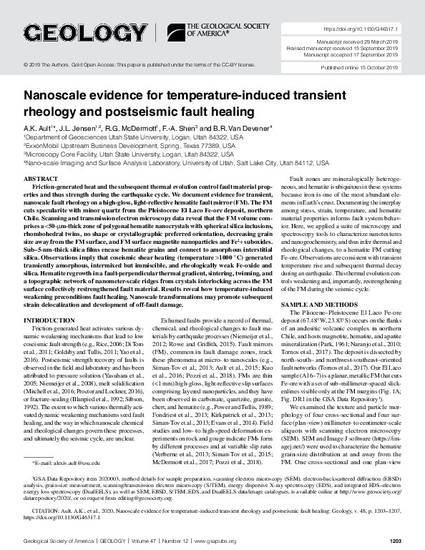
NSF, Division of Earth Sciences (EAR)
Friction-generated heat and the subsequent thermal evolution control fault material properties and thus strength during the earthquake cycle. We document evidence for transient, nanoscale fault rheology on a high-gloss, light-reflective hematite fault mirror (FM). The FM cuts specularite with minor quartz from the Pleistocene El Laco Fe-ore deposit, northern Chile. Scanning and transmission electron microscopy data reveal that the FM volume comprises a2+ suboxides. Sub–5-nm-thick silica films encase hematite grains and connect to amorphous interstitial silica. Observations imply that coseismic shear heating (temperature >1000 °C) generated transiently amorphous, intermixed but immiscible, and rheologically weak Fe-oxide and silica. Hematite regrowth in a fault-perpendicular thermal gradient, sintering, twinning, and a topographic network of nanometer-scale ridges from crystals interlocking across the FM surface collectively restrengthened fault material. Results reveal how temperature-induced weakening preconditions fault healing. Nanoscale transformations may promote subsequent strain delocalization and development of off-fault damage.
